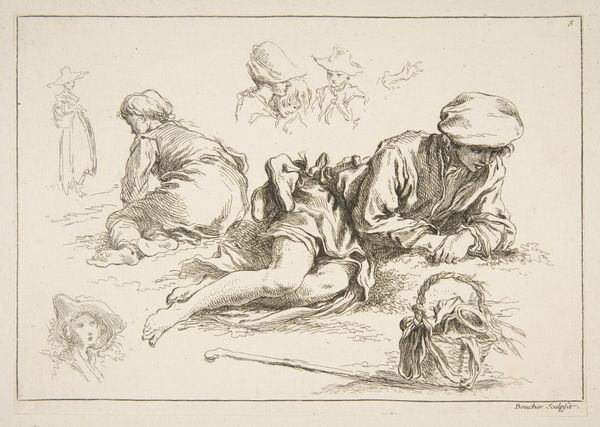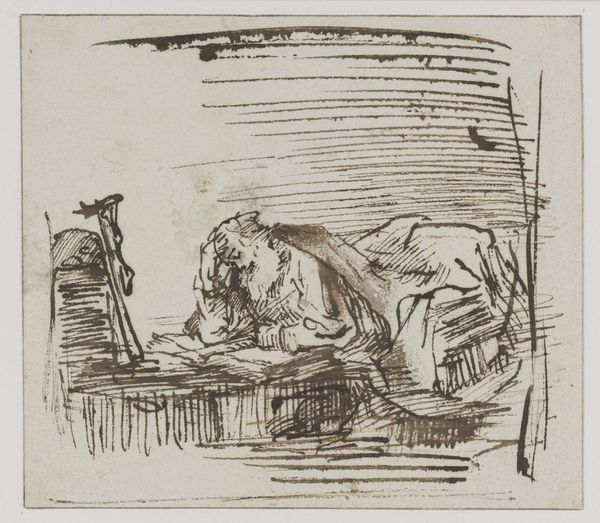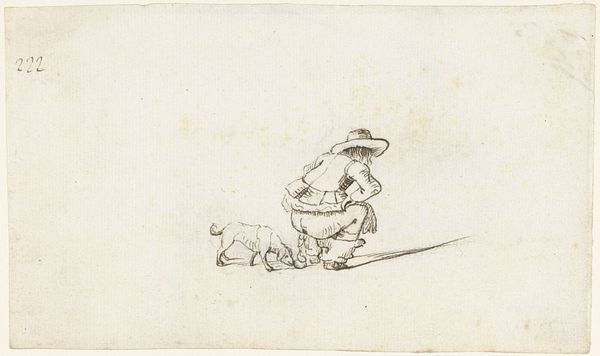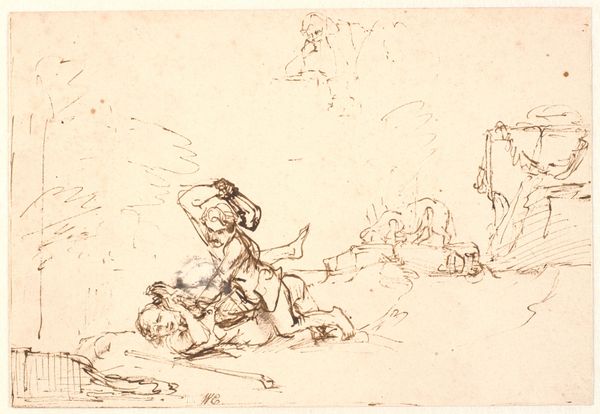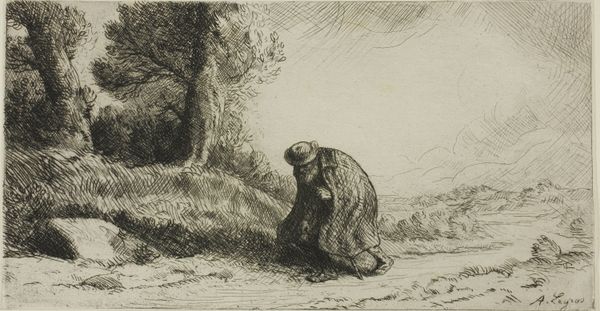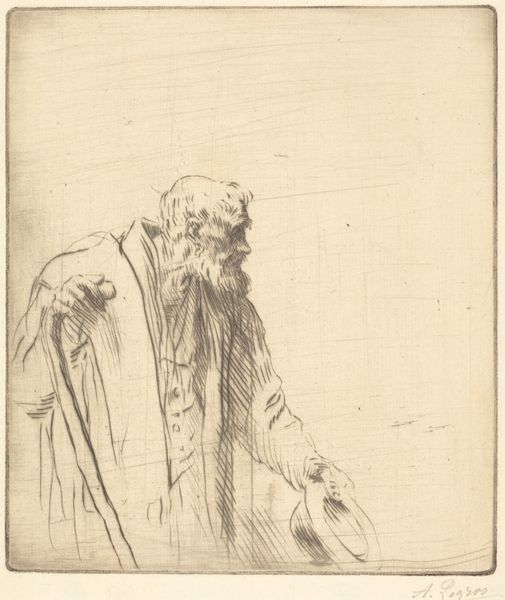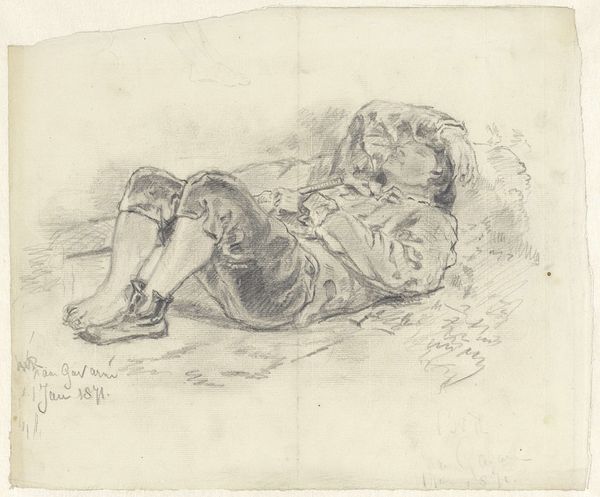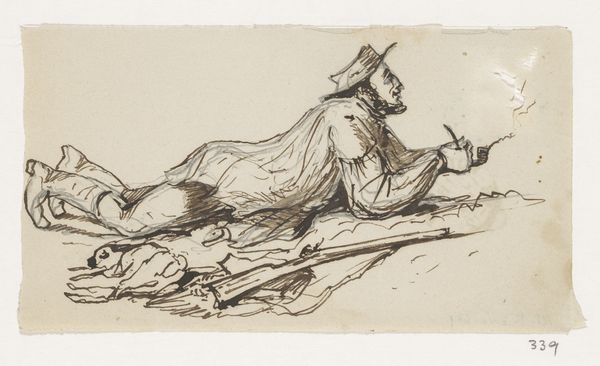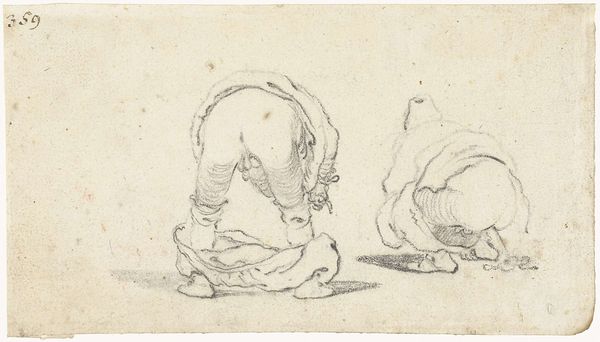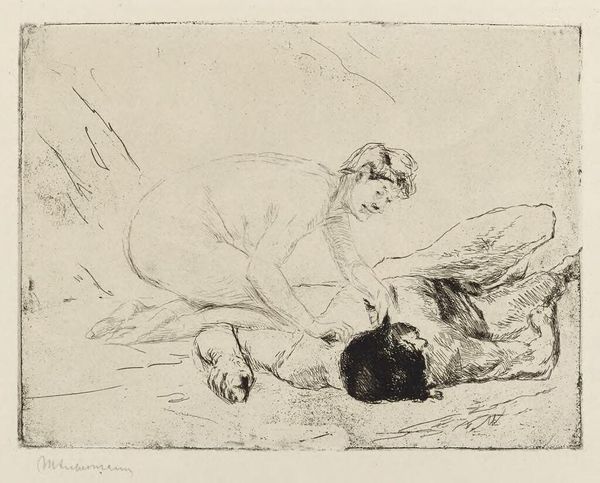
Dimensions: 6 x 9 1/4 in. (15.24 x 23.5 cm) (image)
Copyright: No Copyright - United States
Curator: Standing before us is "The Prodigal Son," a 1909 pencil drawing by Jean-Louis Forain, held here at the Minneapolis Institute of Art. Editor: Well, immediately I see stark emotion laid bare in just a few, beautifully rendered lines. There’s a desolate feeling, but warmth too, strangely enough. Like a whisper of hope against a harsh wind. Curator: Forain, often seen as an observer of modern Parisian life, was deeply engaged with religious and biblical themes, though, in some cases using them as vehicles to express his own socio-political commentary. Here he translates that emotional core of the biblical parable into this poignant scene. It's a really affecting illustration. Editor: Affecting indeed. I'm captivated by the embrace, isn't that always the kicker? The return. The drawing’s restraint is masterful; just two figures in this vast emptiness and the hat cast off at the feet of the kneeling figure feels especially poignant. I sense an overwhelming sense of relief here – but a complex one. Relief mixed with sorrow. What did this boy do? Curator: Well, if you remember the parable from the New Testament, the younger son squanders his inheritance and returns home penniless, begging for forgiveness. The father, instead of punishing him, welcomes him back with open arms. Forain accentuates the religious aspect in an interesting contrast with other artworks about the subject. Editor: So, that humility is almost palpable. The drawing pulls so much out of negative space! And this father embracing the son, as a kind of shadow barely formed… how does Forain make a pencil drawing speak so loud! Curator: Right, I mean, consider how Forain uses line work to suggest weariness in both figures and also a depth of emotion within the paternal embrace. The looser marks describing the landscape beyond underscore the men's closeness in the foreground as they remain vulnerable after the story took them on an important but complicated detour. Editor: So the sparse background acts almost like a stage then, and it draws attention back to these protagonists on the world's center-stage of shame and mercy? You know I hadn't noticed the social commentary lurking beneath those religious undertones! It hits differently now, thinking about societal pressures versus intimate forgiveness. Curator: Precisely. And this drawing becomes something far more powerful— a potent commentary on forgiveness. Editor: This quiet scene, in the end, screams with such raw, universal emotions… it is a real reminder of the human need to start over, isn’t it? I might reflect more on that today. Curator: Yes, a profound image rendered with remarkable simplicity. One to really stick with you after you leave it.
Comments
No comments
Be the first to comment and join the conversation on the ultimate creative platform.
